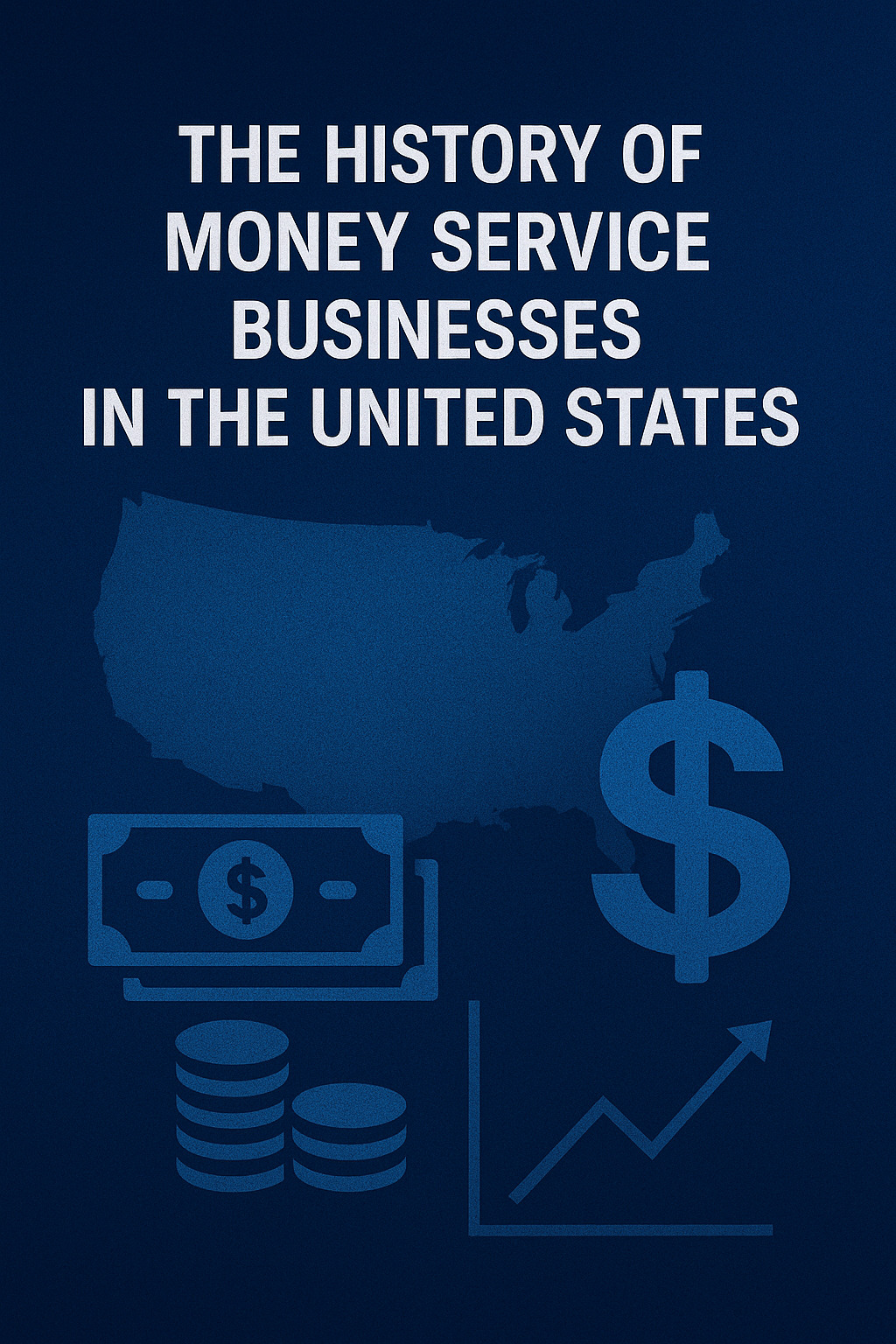Money Services Businesses (MSBs) have been a cornerstone of the U.S. financial landscape for over a century, evolving from rudimentary financial service providers to sophisticated, tightly regulated entities. Initially offering alternatives to traditional banking, MSBs now facilitate global transactions, remittances, and cutting-edge digital finance solutions, adapting to both technological advancements and regulatory demands.
Origins of MSBs
In the early 1900s, MSBs emerged to address the needs of unbanked populations, particularly immigrants and low-income workers reliant on cash. Check-cashing services provided immediate access to funds, while money transfer operations enabled cross-border payments, supporting families separated by borders. These businesses bridged critical gaps in financial access but operated with little regulation, occasionally leading to issues like fraud or financial instability.
Emergence of Regulatory Frameworks
By the mid-20th century, the growing influence of non-bank financial services prompted states to implement licensing requirements. These mandates required MSBs to hold financial reserves, secure bonds, and submit to oversight, ensuring consumer protection. The 1970 Bank Secrecy Act (BSA) introduced federal AML requirements, obligating MSBs to:
- Report transactions exceeding $10,000 through Currency Transaction Reports.
- Maintain comprehensive records of financial activities.
- Submit Suspicious Activity Reports for potentially illicit transactions.
These measures aimed to safeguard the financial system while curbing illegal activities.
Federal Regulation and FinCEN’s Role
The creation of the Financial Crimes Enforcement Network (FinCEN) in 1990 centralized federal oversight of MSBs under the U.S. Treasury. The 2001 USA PATRIOT Act further strengthened this framework, mandating MSB registration with FinCEN and establishing a national database to enhance transparency. The Act also introduced stricter AML and counter-terrorism financing rules, aligning MSB compliance with that of traditional financial institutions.
State-Level Regulatory Complexity
While federal regulations provided a foundation, states retained primary control over MSB licensing and operations. Each state imposed unique requirements for capital, bonding, and compliance, creating a fragmented regulatory landscape. This complexity challenged MSBs seeking nationwide operations, as they navigated a maze of state-specific licensing and examination processes.
The Rise of Fintech and Digital Currencies
The 2000s and 2010s saw MSBs transform with the advent of fintech innovations like mobile payment platforms, prepaid cards, and digital wallets. The rise of cryptocurrencies further reshaped the industry. In 2013, FinCEN classified virtual currency exchanges and administrators as MSBs, subjecting them to BSA and AML regulations. This pivotal ruling expanded the scope of MSB oversight, integrating digital assets into the regulatory fold.
Streamlining Through the MTMA
The Money Transmission Modernization Act (MTMA), introduced in the late 2010s, tackled the inefficiencies of state-by-state regulation. By 2025, over 30 states, including key markets like Texas and New York, had adopted MTMA provisions, which:
- Unified licensing and capital standards.
- Enabled coordinated multistate examinations.
- Clarified regulatory approaches to digital assets.
These changes empowered MSBs to expand more seamlessly across jurisdictions while upholding consumer protections.
Conclusion
The evolution of MSBs in the U.S. reflects a delicate balance between fostering financial innovation and ensuring consumer safety. From early 20th-century check cashers to today’s digital platforms driving global payments and cryptocurrency services, MSBs have continually adapted to meet diverse needs. With FinCEN’s federal oversight, streamlined state regulations through the MTMA, and the inclusion of digital currencies, MSBs stand as vital components of the modern financial ecosystem.

